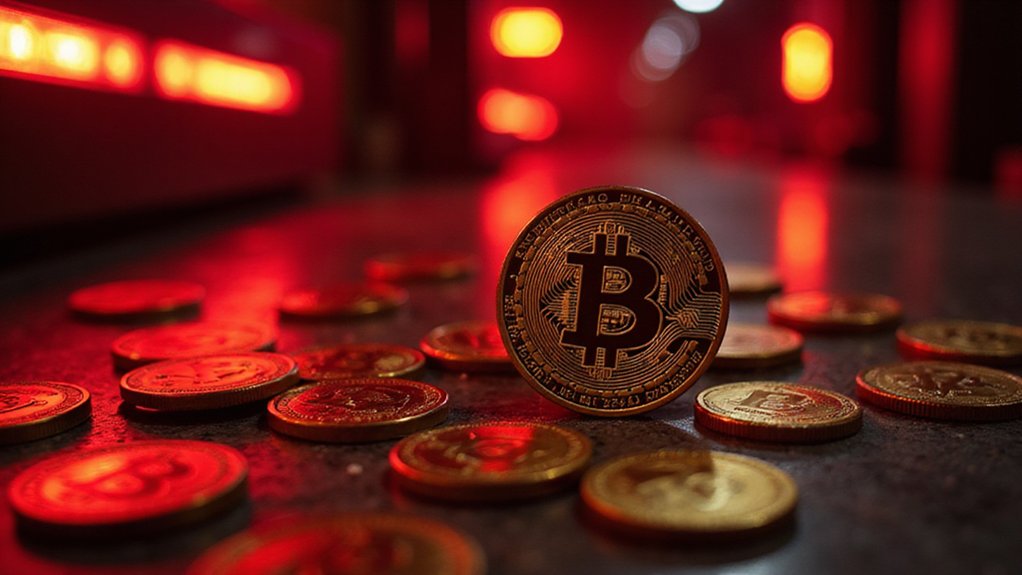When will the cryptographic fortress protecting Bitcoin’s $1.3 trillion market capitalization face its most formidable adversary—not from regulatory crackdowns or energy concerns, but from the peculiar domain of quantum mechanics?
Michael Saylor, MicroStrategy’s chairman and Bitcoin’s most vocal corporate evangelist, has addressed mounting concerns about quantum computing‘s potential to obliterate the cryptographic foundations underlying digital gold.
While pessimists envision quantum computers effortlessly cracking Bitcoin’s SHA-256 hashing algorithm and ECDSA signatures, Saylor maintains characteristic confidence in Bitcoin’s adaptability—though even he acknowledges the technological threat lurking in laboratories worldwide.
Even Bitcoin’s most ardent champion concedes quantum computing poses a genuine existential threat to cryptocurrency’s cryptographic bedrock.
The mathematics are sobering: quantum computers leveraging qubits instead of classical bits could theoretically derive private keys from public addresses, transforming Bitcoin’s security model from impenetrable fortress to glass house.
The vulnerability window between transaction broadcasting and blockchain confirmation presents particular concern, as sophisticated quantum systems could potentially hijack transactions mid-flight.
Current estimates suggest this quantum apocalypse remains 10-20 years distant, providing what cryptographers diplomatically term “adequate preparation time.”
Bitcoin’s dependence on ECDSA for transaction signatures and SHA-256 for proof-of-work creates a dual vulnerability that quantum adversaries could exploit. SHA-256’s strength lies in generating a unique 256-bit hash that maintains data integrity by making it virtually impossible to reverse-engineer the original input.
Unlike traditional computing threats that require brute-force attacks spanning geological timescales, quantum machines promise exponential acceleration—the cryptographic equivalent of bringing nuclear weapons to a knife fight.
The National Institute of Standards and Technology has already identified four quantum-resistant algorithms, signaling institutional recognition of impending threats.
Post-quantum cryptography research accelerates as developers explore lattice-based alternatives and hash-based signatures that could theoretically withstand quantum assault.
Some blockchain networks have preemptively integrated quantum-resistant protocols, though Bitcoin remains conspicuously traditional in its cryptographic approach. Implementing a hard fork to integrate quantum-resistant algorithms into Bitcoin’s existing structure could preserve network security while avoiding complete architectural overhaul.
Saylor’s position reflects broader industry sentiment: quantum threats are real but manageable through protocol upgrades and hard forks when necessary.
The “harvest-now, decrypt-later” strategy—wherein adversaries collect encrypted data for future quantum decryption—adds urgency to preventive measures.
Whether Bitcoin’s decentralized governance can coordinate quantum-resistant upgrades before Q-Day arrives remains the trillion-dollar question.
The cryptocurrency that revolutionized digital scarcity may ultimately depend on humanity’s oldest survival strategy: adaptation under pressure.
Analysis reveals that approximately 25% of circulating Bitcoins are currently vulnerable to quantum attacks due to their storage in exposed P2PK and reused P2PKH addresses.









